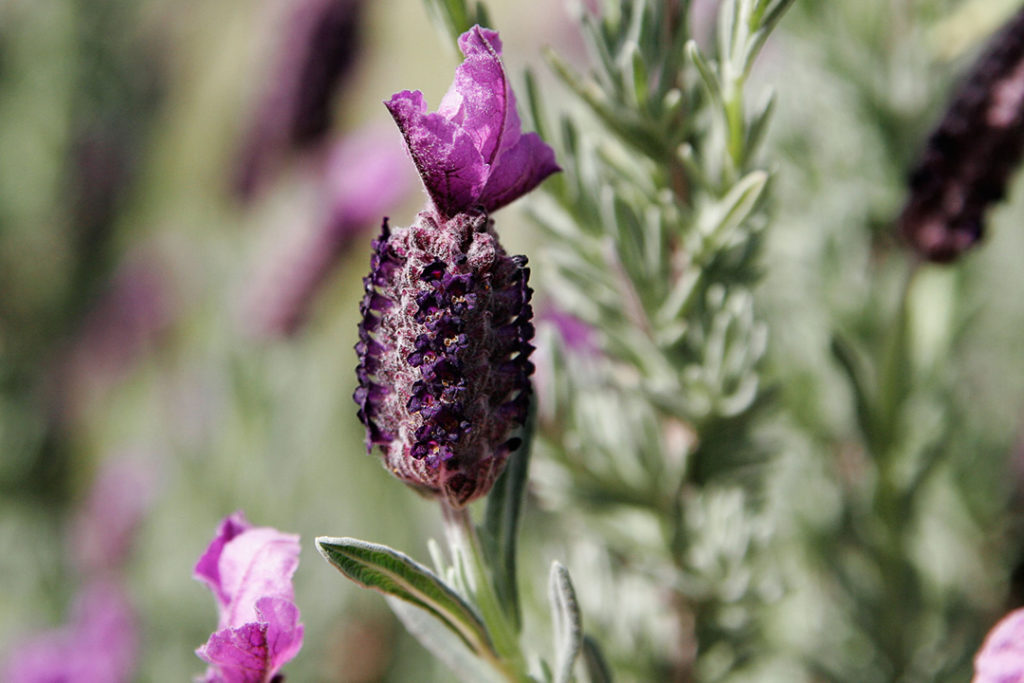
France
French Lavender
Lavandula stoechas

General Description / Cultural Significance
The lavender flower, Lavandula stoechas, is one of the most powerful scents for French people. The hills of the Provence region in the south of the country are at times in bloom with rolling fields of emblematic purple shade of the flower. This image is part of the heart and soul of the French. It is then that the sweet perfume of lavender fills the air. It is particularly intoxicating around the end of July. The fragrance is known by all French people, as it is desired in a myriad of products like soap, lotion, and perfume.
Lavender is also dried and used ornamentally, or else used in pot-pourri. All lavender including French lavender is edible, and is used to make cookies, ice cream, candy, and beverages. As far as medicine, the essential oil and flower of lavender is antifungal, antiseptic, antispasmodic, and digestive. It can relieve nausea when ingested, and externally, it is used for wounds, ulcers, and as a massage oil. The essential oil is scientifically found to be relaxing and to help people fall asleep.
Climate Change/Conservation Status
There are many troublesome environmental warning signs in France. In March 2018 two studies were published that stated that bird populations in farming regions are collapsing with as much as 70% of some species lost. Pesticide use is suspected but it may not be killing the birds directly. The problem centers around growing mono-crops, reducing bird habitats, and escalating pesticide use killing the insects and other organisms that birds depend on for food. The insects also have disappeared. Legislation has now been passed to reduce and control pesticides and leave more land uncultivated.
For some reason, France’s average annual temperature is rising faster than most of the rest of the world and heat waves are becoming more frequent. In 2003, a heat wave killed nearly 15,000 people. Organizations such as the Earth Policy Institute warn that such extreme weather is only going to increase, and so is the death toll. In June of 2019, a heat wave reached 114.6°F, closing schools and claiming lives. In July of the same year, France suffered its most intense heat wave yet to date, one that encompassed much of Europe in record-breaking temperatures. Paris reported the highest temperatures in its recorded history. In 2021, French Parliament passed a climate change bill vowing to reduce emissions by 40% by the year 2030 compared to 1990 levels. Unfortunately, many say this legislation simply isn’t adequate enough given the rapidly increasing temperatures.
Lavender is not reported as endangered in France. In some countries, it has actually become an invasive species. In general lavender is considered a hardy plant, but with changing precipitation patterns it is necessary to continue to monitor the species in order to protect it from the effects of climate change in the future.
Alternate Names
Lavender
Spanish Lavender

